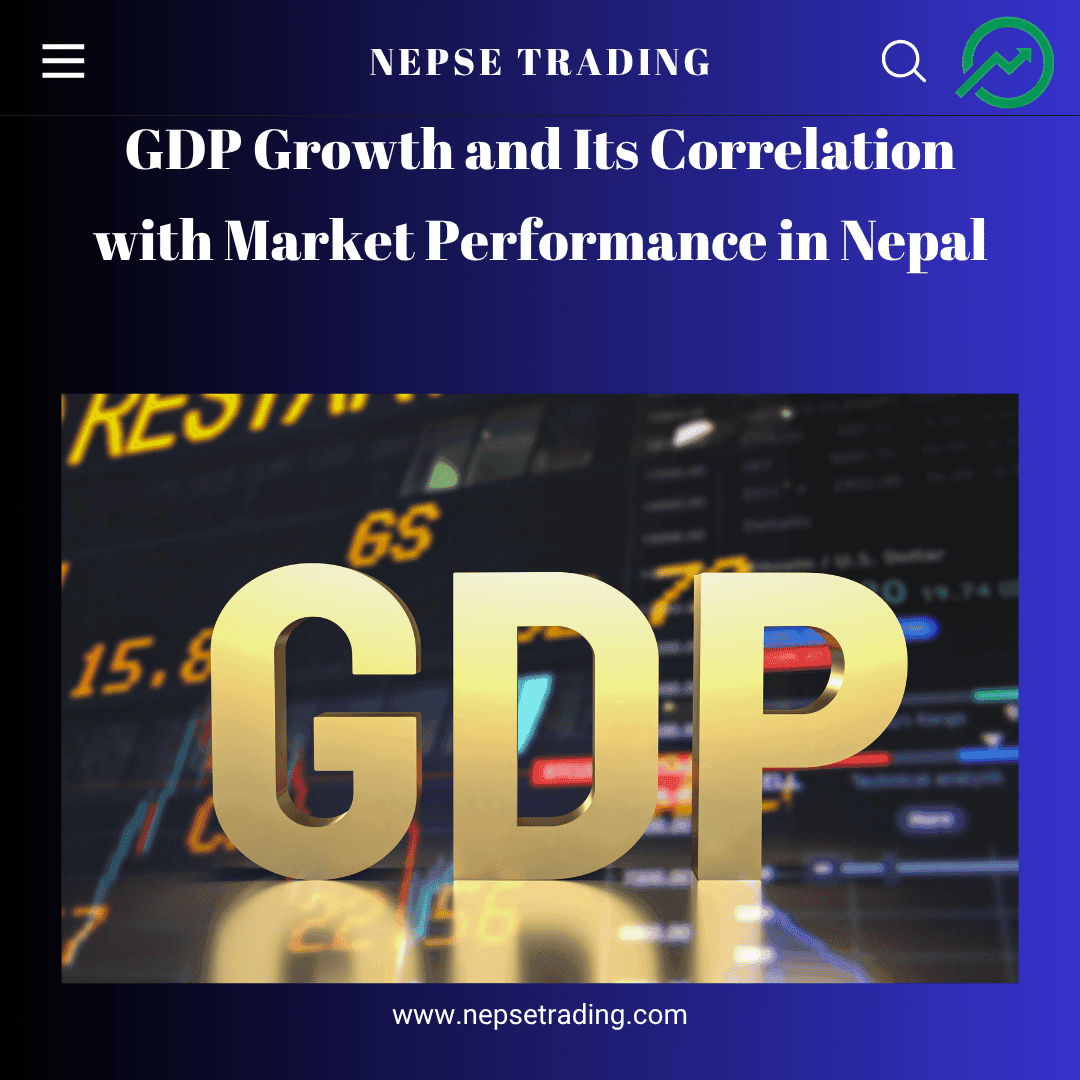By Sandeep Chaudhary
GDP Growth and Its Correlation with Market Performance in Nepal

The Gross Domestic Product (GDP) is one of the most powerful indicators of a nation’s economic strength — and its relationship with the Nepal Stock Exchange (NEPSE) is deeply interconnected. In essence, GDP growth reflects the overall expansion of the economy, while stock market performance represents investor sentiment and expectations about that growth. When the economy grows, businesses earn more, investors gain confidence, and stock prices tend to rise. Conversely, when GDP slows down, company profits weaken, consumption falls, and stock valuations decline.
In Nepal’s context, GDP growth and NEPSE movement often go hand-in-hand, especially in sectors like banking, hydropower, insurance, tourism, and manufacturing. For instance, higher GDP growth usually signals increased investment activity, rising incomes, and higher demand for loans and infrastructure — all of which benefit listed companies. Banks expand their lending portfolios, insurers collect more premiums, and manufacturing and energy companies see increased production and sales. As a result, NEPSE generally performs better in years when the GDP growth rate stays above 5%.
However, the correlation is not always immediate or perfect. The Nepali economy is still developing and structurally transitioning, meaning that GDP growth may not directly translate into market gains due to factors such as liquidity shortages, political instability, NRB regulations, and interest rate changes. For example, there have been periods when GDP was rising but NEPSE was falling because of tight monetary policies or margin lending restrictions. This highlights that while GDP growth provides a macro foundation, market performance also depends on monetary conditions and investor psychology.
From a fundamental analysis standpoint, sustained GDP growth supports earnings expansion, leading to higher valuations and long-term wealth creation. Investors often use GDP data as a barometer to assess sectoral performance — with cyclical sectors like finance, construction, and manufacturing performing better in high-growth periods, and defensive sectors like utilities and telecoms performing steadily during slowdowns.
According to Sandeep Kumar Chaudhary, Nepal’s leading Technical and Fundamental Analyst and founder of the NepseTrading Training Institute, “GDP growth is the mirror of a nation’s progress, and NEPSE is its reflection in motion. A smart investor doesn’t just follow charts — they connect economic fundamentals with market behavior.” With over 15 years of banking experience and 10,000+ trained students, he emphasizes that understanding how GDP trends align with market cycles helps investors make data-driven, disciplined decisions for long-term success.









